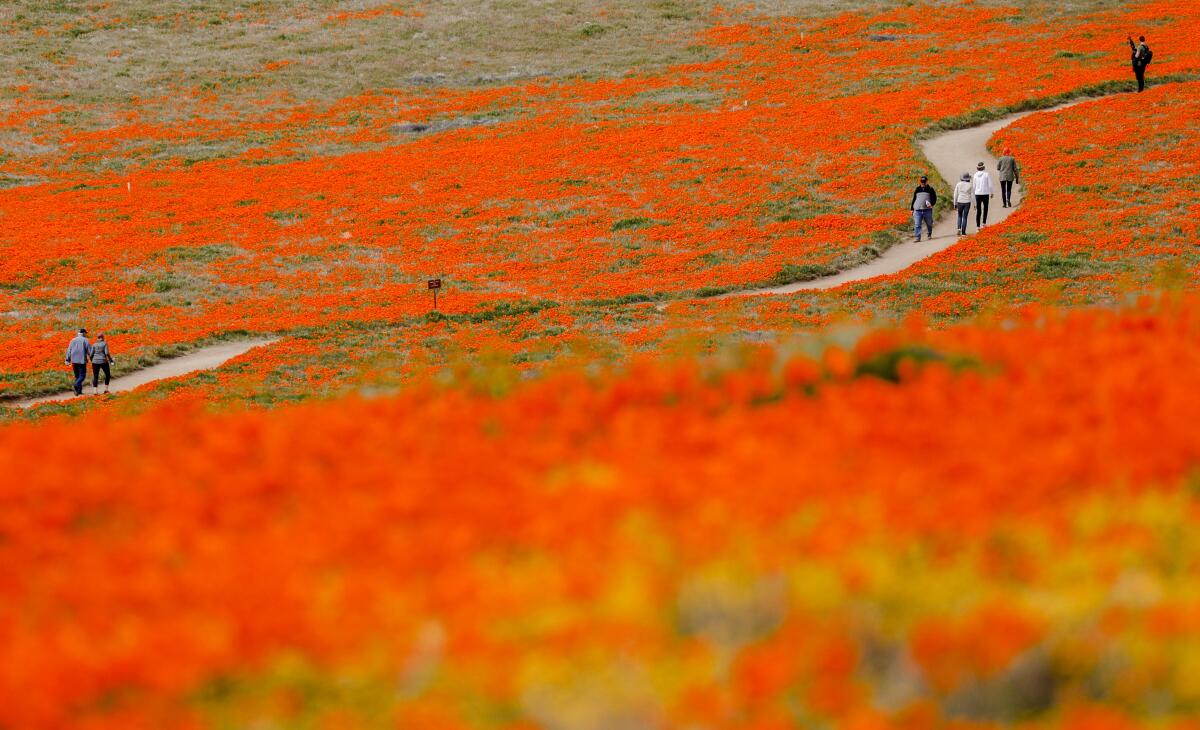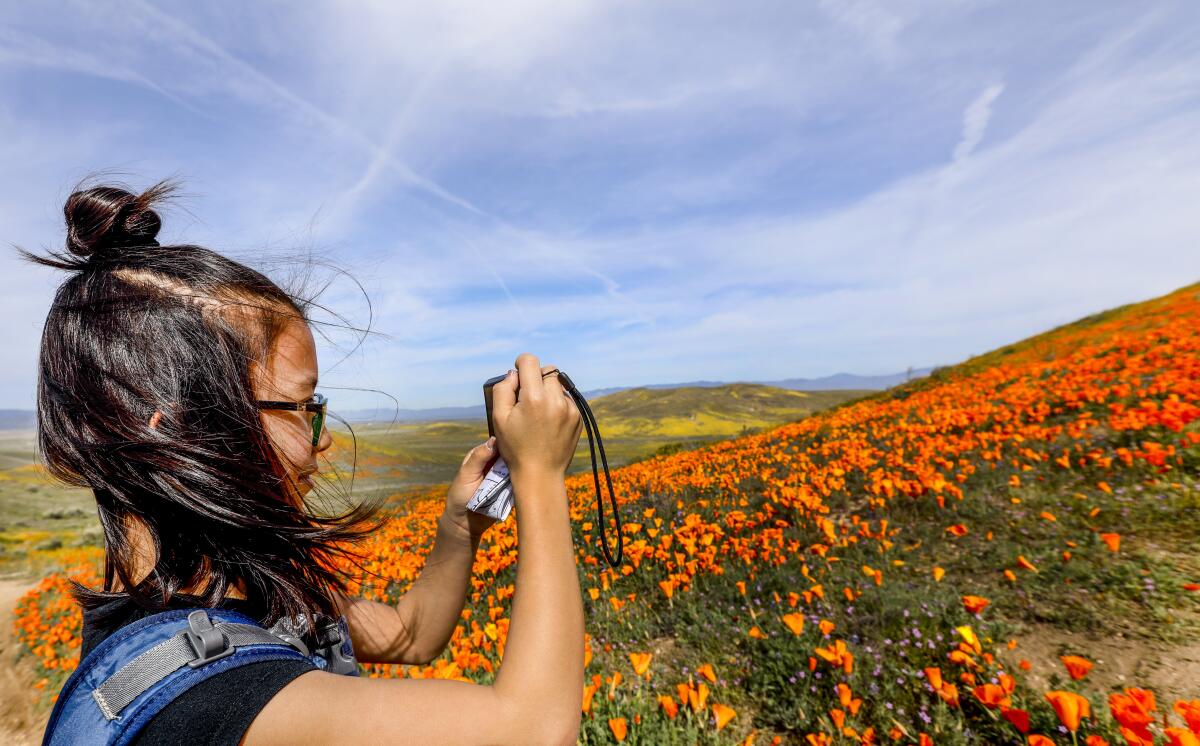Are the conditions ripe for a ‘superbloom’ in rain-soaked California? Here’s what experts say

- Share via
Is a superbloom on the horizon? It all depends on the weather.
Californians endured a record-breaking rainy season earlier this year and the conditions certainly seem ripe for wildflowers to bloom in the next several weeks from the state’s water-soaked soil. But experts say it’s no guarantee of a superbloom.
The key ingredient is more rain, because the difference between a superbloom season and a regular wildflower spring will depend on whether California gets more rain in the coming weeks.
A superbloom is a brilliant display of bright colors spread across a desert landscape or a chaparral after the region is inundated with rain. While large swaths of California did get record-breaking rainfall, the season could turn dry over the next several weeks, reducing the chances of exceptional blooms.
Areas where wildflowers typically bloom, like Palmdale, Lancaster and parts of the Sonoran Desert near Palm Springs, did not see the same deluge of rain as other parts of the state, according to data from the National Weather Service.
“There’s going to be a bloom, but the question is are there going to be tall flowers or are they going to be belly flowers?” said Richard Minnich, a professor with the Department of Earth and Planetary Sciences at UC Riverside. “Belly flowers, meaning you get on your belly to see them, because they’re so small.”
In the hills of Lake Elsinore, children carried drooping apricot-colored poppies while panting dogs ran alongside them, their paws tainted orange.
Wildflowers thrive after a rainy season and especially after years of drought. Evening primrose, desert lilies and other wildflowers come to life in the spring if the conditions are right. But there’s no guarantee, according to Minnich. There are many variables involved for a seed to germinate.
In years past, poppies and deep blue lupine flanked Diamond Valley Lake in Hemet.
Lupines, ocotillos and yellow brickellbush have carpeted the desert floor near Joshua Tree National Park.
And the hills of Lake Elsinore have sung with the vibrant displays of flowers playing host to a deluge of ecotourists. Minnich expects some blooms in the lower San Joaquin Valley around Bakersfield.
For most of the West, the orange California poppies garner the most attention on Instagram and other social media sites in the brief window during a superbloom, but the very concept is relatively new, mainly fueled by social media and attention-grabbing headlines.

There’s no scientific definition for what constitutes a superbloom, according to Daniel Winkler, a research ecologist with the U.S. Geological Survey, Southwest Biological Science Center.
“The superbloom is really a cultural phenomenon, where people decide that there are enough flowers here, right now, that we’ll call it a superbloom,” Winkler said.
Real or not, it’s still too early to tell whether this year’s conditions will bring forward a superbloom, according to the National Park Service. But there are sprouts peeking through the ground, showing promise.
We will have to wait and see.
Lower elevation wildflowers should start blooming in mid-February to mid-April, while higher elevations will see blooms in April through May and July. But again the poppies are on their own schedule.
More to Read
Sign up for Essential California
The most important California stories and recommendations in your inbox every morning.
You may occasionally receive promotional content from the Los Angeles Times.










